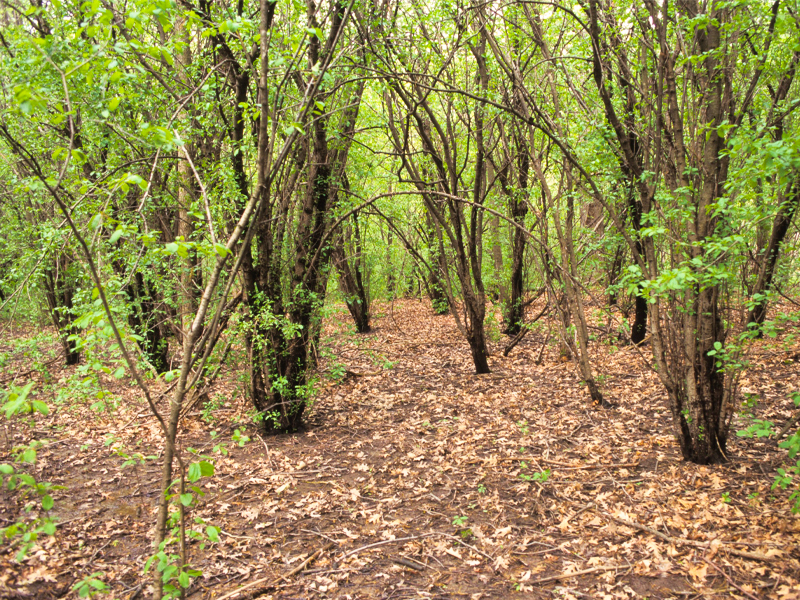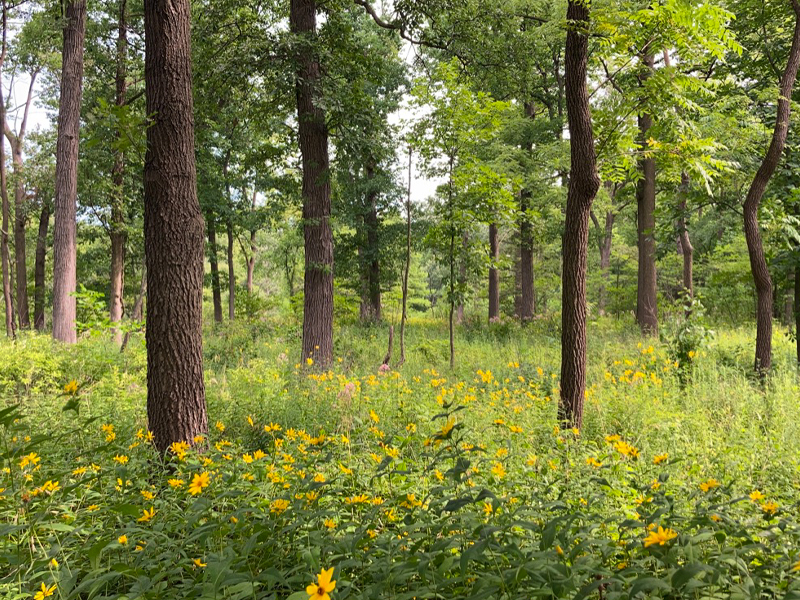

How-to
Garden Stories
Stopping Buckthorn Starts Close to Home
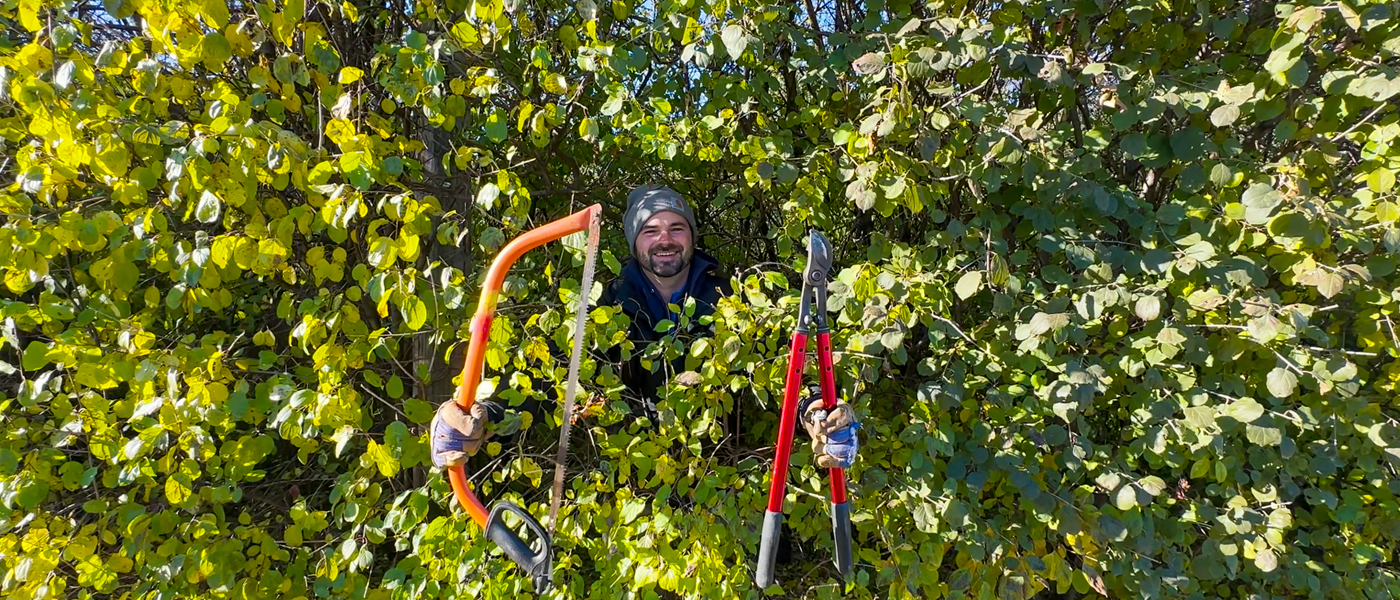
The most common tree in the Chicago area is from Europe—and that’s bad news for our native plants and animals.
Introduced to the United States in the early 1900s as an ornamental plant and privacy hedge, common buckthorn (Rhamnus cathartica) now accounts for 36 percent of all trees in the Chicago area. This invasive species moved from yards and gardens into woodlands, wetlands, and prairies—turning bright, open landscapes into dark thickets of buckthorn that don’t support native plants and animals.
The good news? Thousands of your neighbors are pitching in to help. You can join the effort by removing buckthorn from your property or volunteering to help repair the damage buckthorn has done to local forest preserves and parks.
Left: A woodland dominated by buckthorn. Right: A healthy, open woodland. When buckthorn takes over an area, almost nothing can grow under it. Photos by Jim Steffen and Matt Evans.
Why buckthorn is bad for native plants and animals
The plants and animals of our native woodlands, wetlands, and prairies evolved together, forming relationships with each other over thousands of years to create rich, diverse communities. But buckthorn wasn’t here for that.
Without those long-term relationships to help keep things in balance, buckthorn has been able to quickly take over the habitats our native plants and animals depend on, using these strategies and advantages:
Growing almost anywhere – Buckthorn can grow as a shrub in the sun or a tree in the shade, adapting its form to maximize access to sunlight. It’s a major problem in natural areas, but buckthorn isn’t picky about where it grows—thriving along roadways, urban waterways, and between residences.
Staying green – Buckthorn develops leaves weeks earlier in spring and drops them weeks later in fall than native plants. This longer growing season helps fuel its fast growth and blocks sunlight from reaching native plants below.
Changing the soil – Buckthorn releases a toxic chemical into the soil that hinders the growth of other plants. The chemical can linger in the soil even after buckthorn is removed and can harm frogs and other amphibians.
Seeding success – Buckthorn seeds have a high rate of success, and fast-growing seedlings can quickly shade out native plants. Birds help spread the seeds—because when buckthorn takes over an area, there is very little food left for birds to eat besides buckthorn berries.
How to identify and remove buckthorn on your property
The number one clue you have buckthorn on your property? It’s the only green thing around in early spring and late fall.
Learn more about identifying and removing buckthorn from Matt Evans, woodlands ecologist at Chicago Botanic Garden:
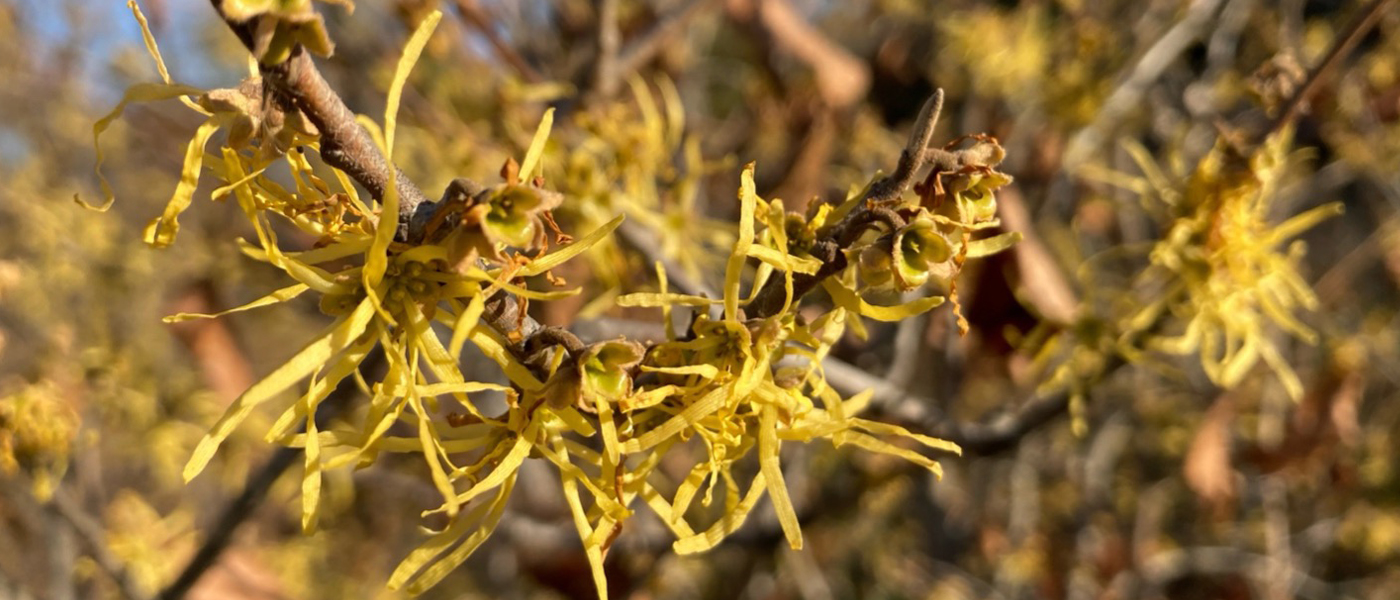
Common witch hazel (Hamamelis virginiana) produces fragrant yellow blooms in fall.
How to choose native shrubs to replace buckthorn
But what if buckthorn serves a purpose on your property? There’s a native shrub for that!
Whether you are looking for privacy, food for birds, food for you, a pollinator magnet, beautiful flowers, great fall color, or something else—native shrubs can do the job.
To find the right native shrubs to replace buckthorn (and other invasive shrubs like burning bush, barberry, and privet) on your property, check out the Chicago Region Trees Initiative’s (CRTI) Healthy Hedges program.
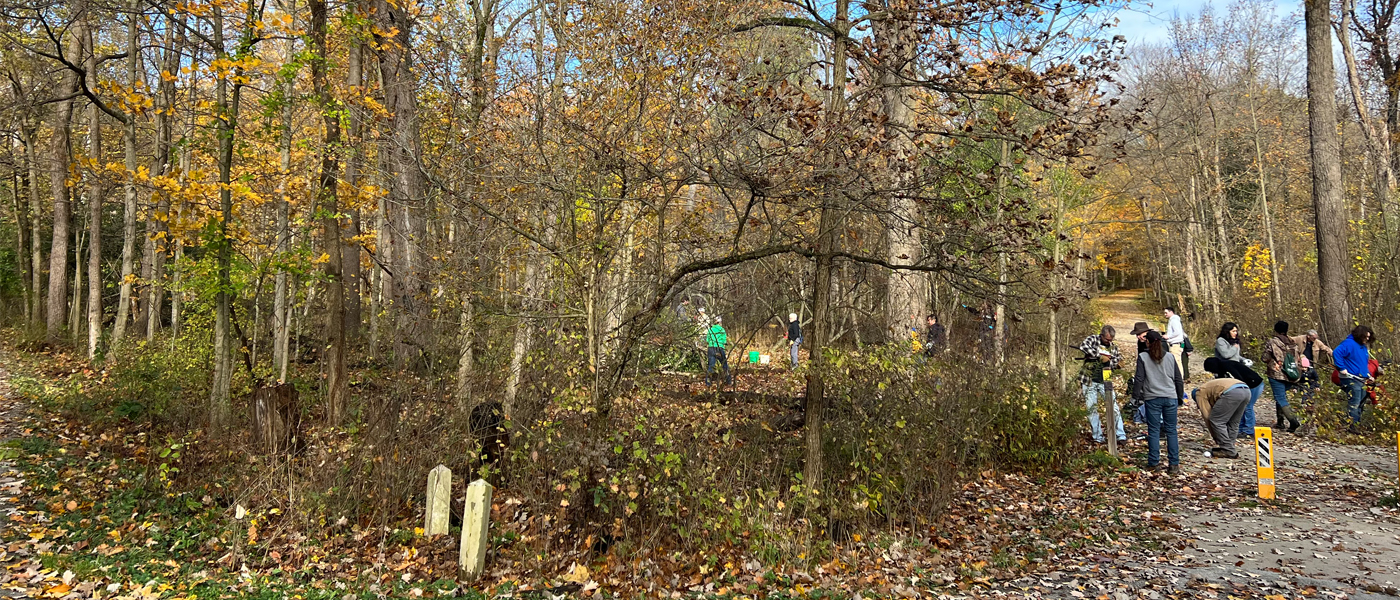
Volunteers help remove buckthorn at a park. Photo by Matt Evans.
Help remove buckthorn at your local forest preserve or park
Repairing the damage buckthorn has done will take years, but you can help—with saws, loppers, and seeds. The Forest Preserves of Cook County hosts ecological stewardship days every weekend at sites throughout the county, where you can join a community of volunteers dedicated to caring for their local forest preserve.
Not near a Cook County forest preserve? Look for opportunities with your local park district, forest preserve district, or conservation group.
See Buckthorn Removal Success at McDonald Woods
Ecological restoration efforts—including ongoing buckthorn removal—at McDonald Woods have transformed a formerly degraded oak woodland remnant into a natural treasure that supports hundreds of native plant and animal species. Garden ecologists, along with dedicated volunteers, have worked since 1988 to repair and restore this important woodland habitat.
Visit: McDonald Woods is located along Lake Cook Road from the Garden entrance east to Green Bay Road. Hiking trails are accessible from parking lots 2 and 5; a 5-minute walk from the Visitor Center.


